Roof
Roof
The roof is the most vulnerable component of your home because it is such a large horizontal surface. The job of the roof is to protect the house from the weather. During a wildfire it must be able to resist wind-blown embers and other wildfire exposures. Complex roofs, where the roof meets vertical walls (e.g., a roof with dormers, or a split-level house) present additional vulnerabilities that must be addressed.
To skip ahead to a specific topic detailed on this web page, select from the following:
1. What does the fire rating mean?
Fire ratings for roof coverings are based on a standard test method that evaluates three fire-related characteristics of a roof covering, including the ability to 1) resist the spread of fire into the attic (or cathedral ceiling) area, 2) resist flame spreading on the roof covering, and 3) resist generating burning embers. This basic standard test method is provided in the American Society for Testing and Materials (ASTM) Standard E-108, Underwriters Laboratory (UL) Standard 790, and National Fire Protection Association (NFPA) Standard 276. These standard test methods are similar, so there is no need to worry which test was used to evaluate your roof covering.
Ratings
Rooves with Class A ratings providing the highest protection and those with a Class C rating provide a less protection. Non-fire retardant treated wood shakes are not rated (i.e., their rating doesn’t meet the requirements for Class C) and should not be used in wildfire prone areas. Class A materials include flat or barrel-shaped roof tiles, fiberglass asphalt composition shingles, and metal roofs (i.e., steel or copper). Fire-retardant pressure-treated shakes and shingles are the most common Class B roofing material. Class C fire rated roof coverings include recycled plastic and rubber products and roof aluminum coverings. Class B and C roof coverings can typically meet Class A requirements when additional underlayment materials are used.
Details matter: stand-alone or assembly-rated?
Some roof coverings rely on an underlying material, or special installation techniques, to improve their fire rating. Fire ratings for roof coverings that require an additional material are typically referred to as a "by-assembly," as opposed to a "stand-alone," fire rating. Examples of a “by assembly” fire rating include fire-retardant treated wood shakes, aluminum and recycled plastic and rubber roof coverings. Common underlying materials include a mineral surfaced cap sheet (formerly referred to as a Type 72 cap sheet) adequate to provide Class A membrane construction, and a panelized fiberglass gypsum board.
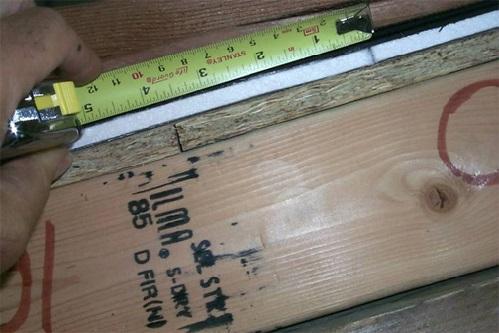 |
 |
| Caption: The white sheet material shown in the photograph on the left is a fiberglass – gypsum board product. This product has a stand-alone Class A rating. With assembly-rated roof coverings, it is important to build the roofing assembly using the same materials and details that were used when testing for compliance. This information will be included in the installation instructions. The material shown in the photograph on the right is a mineral surfaced cap sheet material sold in roofing supply stores. These materials are commonly used in Class A “by-assembly” construction. | |
Fiberglass asphalt composition shingles
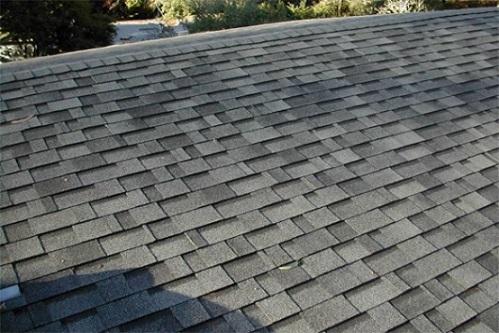 |
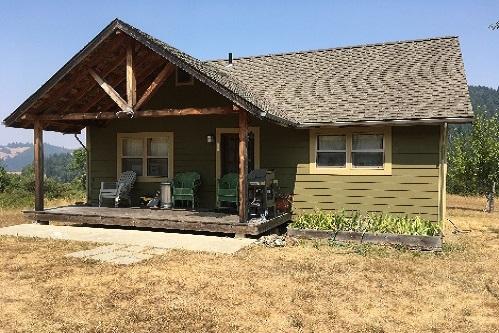 |
| Caption: Asphalt fiberglass composition roof shingles are relatively inexpensive, have a Class A fire rating, and it is relatively easy to repair or replace damaged shingles, although there will likely be a slight color difference between the new and aged shingles |
|
Concrete or clay roof tiles
 |
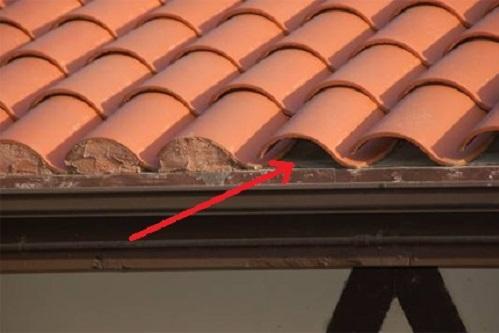 |
| Caption: Flat and barrel-tile rooves have Class A ratings, however, gaps between the covering and roof deck that can occur at roof edge and ridge need to be plugged to minimize entry of embers into that space. Wind-blown vegetative debris will accumulate in the same space between roof covering and roof deck. When flat tiles are used, as seen in this photograph (left), gaps can occur at the ridge. Another common location where gaps occur is at the roof eave in cases were a barrel-shaped tile roof covering is used. When plugging (or bird stopping) is missing a bird can access the space between the roof covering and the sheathing and build a nest. Rodents can also build nests in these areas. During a wildfire, embers can penetrate the roof edge and ignite the nest or other debris in that cavity. Gaps at the ridge must also be filled. A mortar type compound can be used to plug the gaps. The material used to plug openings can fail over time and therefore regular inspections and repairs are strongly recommended. | |
Rooves are vulnerable to fire at roof-to-wall intersections, roof edges, and at through-roof vents and at skylights. This section will review specific areas and suggest design or installation strategies to reduce flame or ember penetrations.
Valley
A valley occurs where two roof plains intersect. Valleys are places where leaves and needles often accumulate and where embers can land. To increase the resistance of the valley to heat and flames there are a few important installation considerations. If metal valley flashing is used, an underlying mineral surfaced cap sheet must be incorporated into the assembly. With Class A asphalt composition shingles, use of metal flashing can be avoided by interweaving the shingles. A cut valley could also be used.
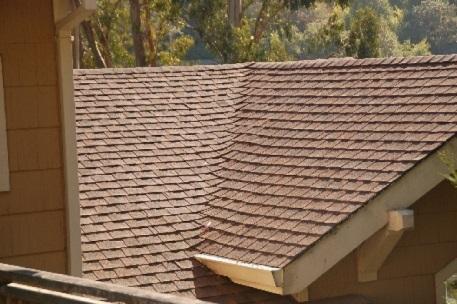 |
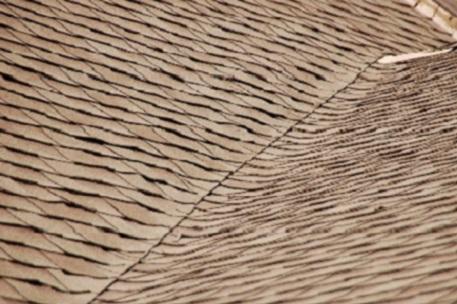 |
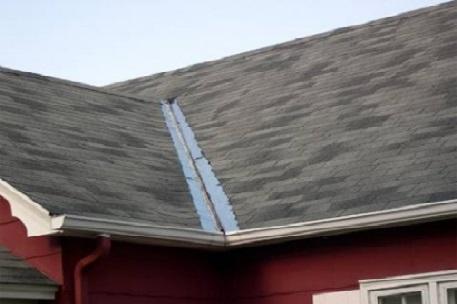 |
| Caption: The photos show Class A asphalt composition shingles. On the left there is a woven valley and the center photo includes a cut valley. A mineral surfaced cap sheet material isn't required in either case. Use of metal flashing in the valley (photo on the right) would require use of a cap sheet material in the valley, underlying the metal flashing. | ||
Simple versus complex roof designs
The more intersections and shapes included in the roof design, the more opportunity there will be for leaf, needle and other vegetative debris to accumulate. Flame exposure to siding at roof-to-wall intersections can occur if vegetative debris is ignited by embers. If the siding is installed close to the roof, the siding could be ignited directly by embers (i.e., without initial ignition of vegetative debris).
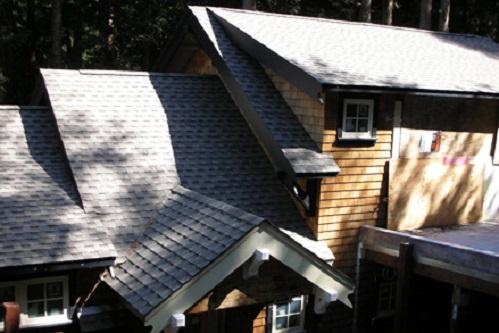 |
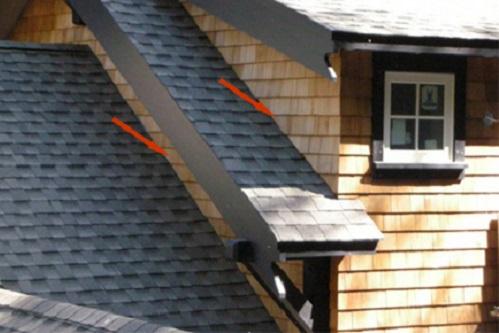 |
| Caption: These photos show a complex roof where the wood shingle siding is far more vulnerable than the Class A asphalt composition shingle roof covering. | |
 |
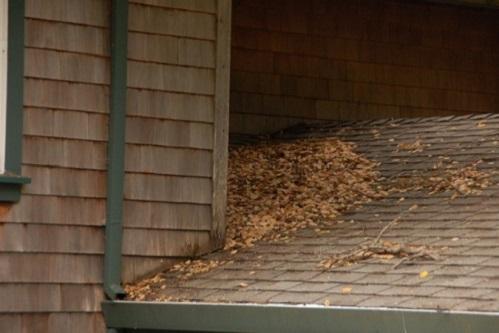 |
| Caption: Note debris accumulation on the roof in area adjacent to the shingle siding. This debris can be ignited by wind-blown embers. The resulting fire will result in a flaming exposure to both roof and siding. This is another way that the fire protection provided by a Class A roof can be by-passed – the Class A roof covering can handle this type of (flaming) exposure, but in these cases the siding may not. Removing debris from these rooves should be a routine maintenance item and is critical to the home’s wildfire resilience. | |
Dormers and chimneys
Dormers and other exposed siding can be reinforced with an underlayment of a fire-rated gypsum product to increase the resistance of the siding to the penetration of flames. Referred to as Type X, many of the gypsum board manufacturers produce a product that can be used in this application. When a combustible siding product is used, a corrosion resistant metal flashing can be used at roof-to-wall intersections to improve the resistance of siding to ignition from embers that can accumulate at these locations. Installation details are important to avoid moisture related degradation that could occur should water get behind the flashing. An example detail is shown below.
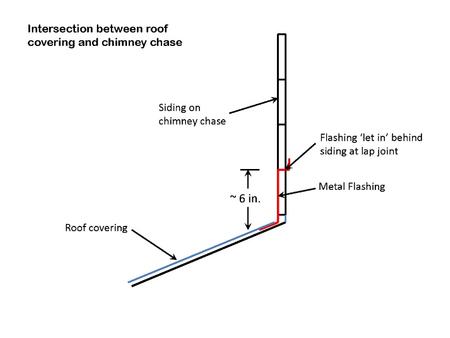 |
Skylights
Skylights can provide an entry point for embers. If you have a skylight that opens, make sure it is closed during a wildfire in order to avoid entry of embers. The slope of the roof, the location and proximity of nearby combustible vegetation and other combustible materials or structures, and the location of accumulated leaves and other vegetative debris on and around the skylights will affect the vulnerability of the skylight. If your roof has a steep pitch, the skylight would receive more radiant heat from nearby burning vegetation or buildings, and glass may break, or the plastic made from or ignite. It is better to keep debris cleared away from the skylight.
Debris will not typically accumulate on domed skylights, but it can on the flat skylights, particularly on lower sloped roofs. Debris can also accumulate at the edge of skylights, but construction framing and detailing are the same for both typed of skylights. If that debris were to ignite, then the materials and connections at the roof-to-skylight intersection could be vulnerable, so it is important to clear debris on a regular basis. Overhanging tree branches should be removed, since a broken branch could fall and break or damage the glass or plastic components of the skylight. Overhanging tree branches can also result in greater vegetative debris loading on the roof and in gutters.
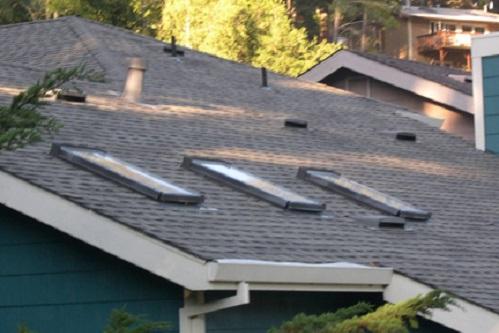 |
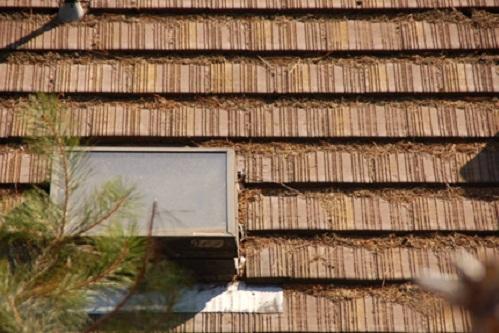 |
| Caption: Skylights constructed of tempered glass are more resistant to radiant heat. | |
 |
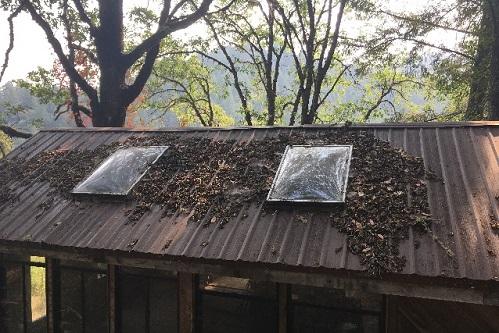 |
| Caption: The operable skylight shown in this photograph (left) has a domed acrylic shell and should be closed when wildfires are burning nearby. A screen is usually incorporated into the design of an operable skylight, as was the case here; however, closing the skylight is the safest option. The skylight would be the most vulnerable part of the metal roof on the right. The photo on the right demonstrates the vulnerability to leaf accumulation. | |
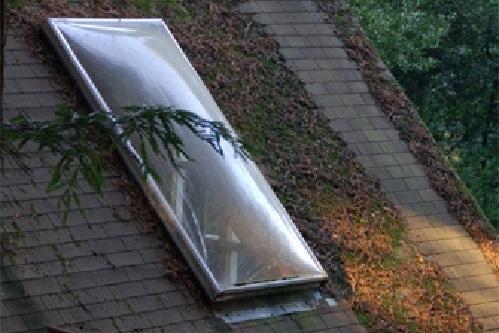 |
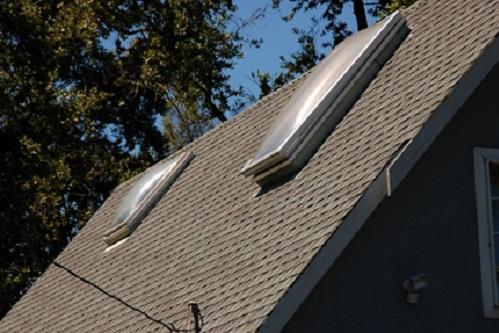 |
| Caption: Note the accumulation of needles on the roof and around the skylight on the left. Skylights on steeper rooves would also be vulnerable to the heat created when the surrounding vegetation or nearby buildings burn. The steeper the roof, the more it will function as a wall in terms of response to a radiant heat exposure. | |
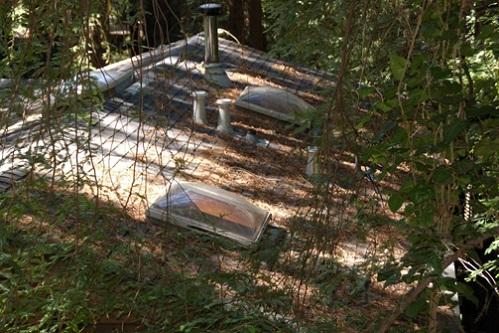 |
 |
| Caption: If tree branches overhang the roof, and specifically the skylight, they should be removed (even without considering a fire exposure, since if an overhanging branch should break, it could land on and break the glass or plastic in the skylight). None of these configurations could pass a standard Class A fire exposure test used to evaluate roofing materials. | |
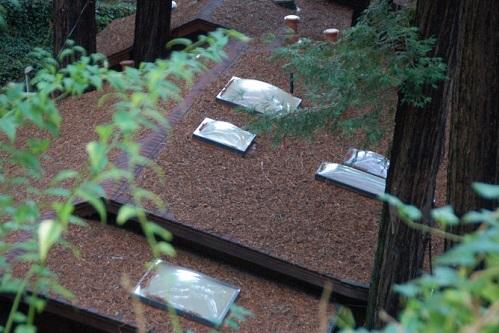 |
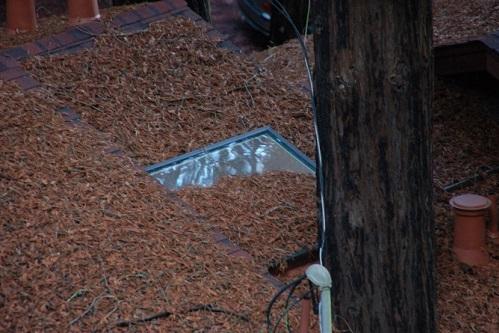 |
| Caption: A domed skylight is shown on the left and a flat skylight is shown on the right. Note the amount of debris that has accumulated on both roofs. | |
Roof edge
The roof edge is vulnerable to wildfire exposures via 1) a debris-filled rain gutter (see “gutters” below), 2) gaps between the roof covering and the roof sheathing (see “concrete or clay roof tiles” above), and 3) when a metal drip edge is not installed.
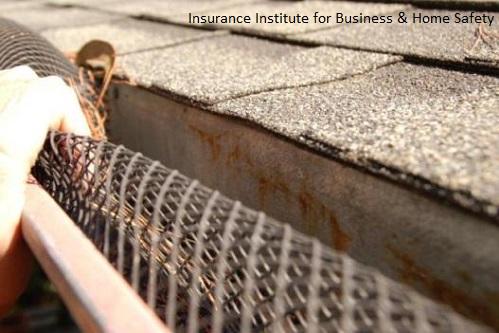 |
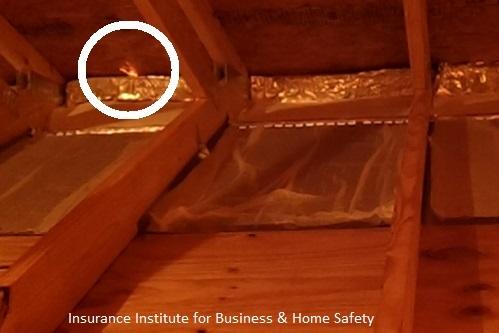 |
| Caption: The metal drip edge (shown in photo on the left) seals off the roof edge to minimize ember entry to the attic (show on right) via materials burning in a rain gutter or wind-blown embers impinging on the area at the edge of the roof. The photo on the right shows an ember penetrating the attic at the top-of-fascia to roof sheathing intersection (circled). The is because a metal drip edge was not installed on this roof. | |
Rain gutters
Burning debris in a gutter will provide a flame contact exposure to the edge of the roof. A metal drip edge would help resist the entry of flames into the attic space or cathedral ceiling by providing protection to the otherwise exposed roof sheathing and fascia board.
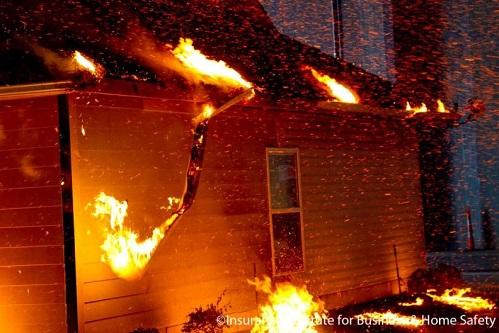 |
| Caption: Although noncombustible gutters are recommended, the material that the gutter is made from is less important than keeping debris from accumulating in it. The photo above shows a metal gutter on the right. This gutter will stay in place while the ignited debris burns, with the resulting flames impinging at the edge of the roof. In these cases, the fire-rating of the roof covering (Class A in this case) isn’t providing protection to the area where flames are touching (the metal drip edge will help in this regard). A plastic gutter (shown on the left) will eventually melt and fall to the ground, as it is doing here. While the gutter is attached, flames are impinging on the components located at the edge of the roof (i.e., roof sheathing and fascia). Once the gutter detaches, flaming debris and burning gutter material will re-locate to the ground. Plastic gutters are typically made from polyvinyl chloride (PVC). Plastic gutters will burn as long as combustible debris around it are burning. Once the debris burns out, the PVC gutter will self-extinguish (the chlorine being an effective fire retardant in this case). |
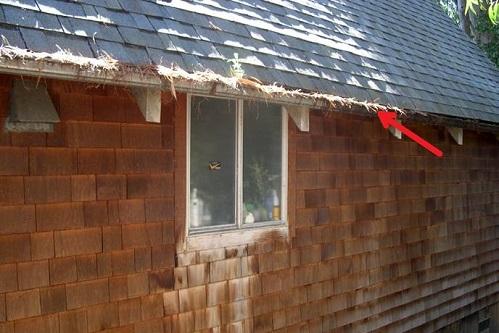 |
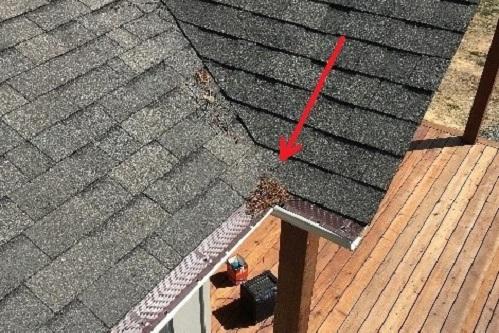 |
| Caption: The most important thing you can do for the gutter is to keep it clear of debris. Noncombustible gutter cover devices can be installed to minimize accumulation of debris inside the gutter; however, nothing is without maintenance and debris can still accumulate in this vulnerable area. | |
Vents
Attic and crawl space vents serve important functions in buildings by helping reduce moisture levels in these spaces, either from the soil (in the case of a crawl space) or from the living space (in the case of attics and cathedral ceilings). Vents can also be locations for ember entry. See “Vents” for more detailed discussion of risks and mitigations.
Solar Panels
During a wildfire, solar panels installed on the roof and can be a vulnerability, particularly if debris has accumulated underneath them. The underside of solar panels includes plastic components and would be vulnerable to flames from ember-ignited debris. As has been discussed before, removal of debris from the roof should be an ongoing maintenance item. Studies have shown that burning solar panels can have a negative impact on the fire rating of the roof covering.
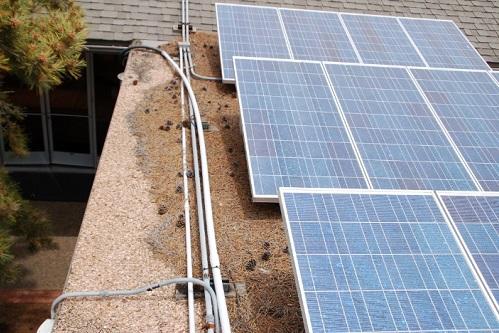 |
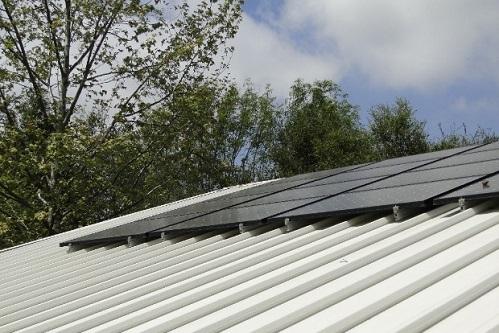 |
| Caption: Debris can accumulate under solar panels, especially on flat roof (photo left). Any accumulated debris should be removed from under solar panel because ignition of his debris could result in a flaming exposure to a portion of the panel. If ignited, flame could spread to the entire underside of the panel. Installation of solar panels on a flat roof can be accomplished with a weighted mounting system (known as a ballast system) rather than a bolted connection. Solar panels installed on a sloped roof (photo right) will have a mechanical fastening system (e.g., bolted through the roof covering to the underlying roof sheathing). | |
Chapter 7 A provides minimum construction requirements for new home construction in wildfire prone areas. This code is adopted and enforced in all State Responsibility Areas and in Very High Fire Hazard Severity Zones in Local Responsibility Areas. Fire Hazard Severity Zones are determined by CAL FIRE. In Local Responsibility Areas CAL FIRE collaborates with the local jurisdiction when finalizing the areas that have a Very High ranking. If you are unsure if your home is in a wildfire-prone area, please contact your local fire department. The goal of these standards is to help homes resist ignition, and if ignition occurs, to resist the intrusion of flames or embers into the home or business. The codes are updated regularly and can be found at: http://www.fire.ca.gov/fire_prevention/fire_prevention_wildland_codes
There may be local additions to the code adopted in your community. Check with your local authorities for more information. Your local authority would likely be your building department or your fire department.



